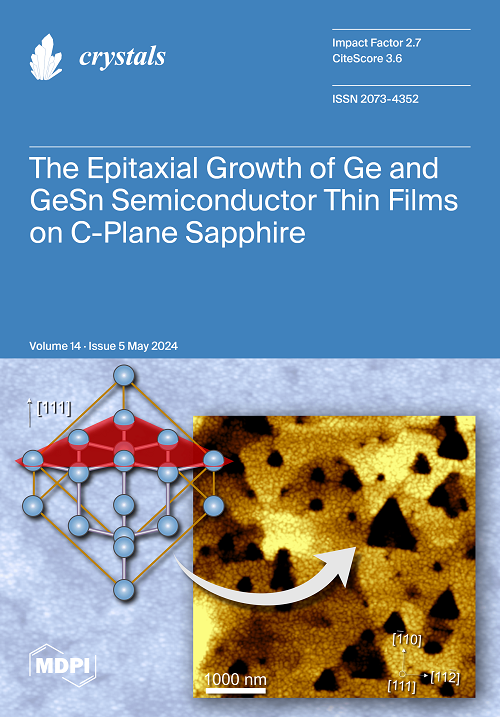Electron Beam Welding of Copper and Aluminum Alloy with Magnetron Sputtered Titanium Filler
IF 2.4
4区 材料科学
Q2 CRYSTALLOGRAPHY
引用次数: 0
Abstract
In this work, the results from the electron beam welding of copper and Al6082T6 aluminum alloy with a titanium filler are presented. The influence of the filler on the structure and mechanical properties of the welded joint is studied in comparison with one without filler. The X-ray diffraction (XRD) method was used to obtain the phase composition of the welded joints. Scanning electron microscopy (SEM) was used for the study of the microstructure of the welds. Energy-dispersive X-ray spectroscopy (EDX) was applied to investigate the chemical composition. The mechanical properties were studied by means of microhardness measurements and tensile tests. A three-phase structure was obtained in the fusion zone consisting of an aluminum matrix, an intermetallic compound CuAl2, and pure copper. The application of Ti filler significantly decreased the amount of molten copper introduced in the molten pool and the number of intermetallic compounds (IMCs). This improved the strength of the joint; however, some quantity of IMCs was still present in the zone of fusion (FZ), which reflected the microhardness of the samples. The application of a titanium filler resulted in refining the electron beam weld’s structure. The finer structure and the reduced amount of the brittle intermetallic phases has led to an increase in the strength of the joint.铜和铝合金与磁控溅射钛填充物的电子束焊接
本文介绍了使用钛填充物对铜和 Al6082T6 铝合金进行电子束焊接的结果。与无填充物的焊点相比,研究了填充物对焊点结构和机械性能的影响。采用 X 射线衍射 (XRD) 方法获得了焊点的相组成。扫描电子显微镜(SEM)用于研究焊缝的微观结构。能量色散 X 射线光谱法(EDX)用于研究化学成分。通过显微硬度测量和拉伸试验研究了机械性能。在熔合区获得了由铝基体、金属间化合物 CuAl2 和纯铜组成的三相结构。钛填料的使用大大减少了熔池中铜的含量和金属间化合物(IMC)的数量。这提高了接头的强度;然而,熔合区(FZ)中仍存在一定数量的 IMC,这反映了样品的显微硬度。钛填料的应用使电子束焊缝的结构更加精细。结构的细化和脆性金属间相数量的减少提高了接头的强度。
本文章由计算机程序翻译,如有差异,请以英文原文为准。
求助全文
约1分钟内获得全文
求助全文
来源期刊

Crystals
CRYSTALLOGRAPHYMATERIALS SCIENCE, MULTIDIS-MATERIALS SCIENCE, MULTIDISCIPLINARY
CiteScore
4.20
自引率
11.10%
发文量
1527
审稿时长
16.12 days
期刊介绍:
Crystals (ISSN 2073-4352) is an open access journal that covers all aspects of crystalline material research. Crystals can act as a reference, and as a publication resource, to the community. It publishes reviews, regular research articles, and short communications. Our aim is to encourage scientists to publish their experimental and theoretical results in as much detail as possible. Therefore, there is no restriction on article length. Full experimental details must be provided to enable the results to be reproduced. Crystals provides a forum for the advancement of our understanding of the nucleation, growth, processing, and characterization of crystalline materials. Their mechanical, chemical, electronic, magnetic, and optical properties, and their diverse applications, are all considered to be of importance.
 求助内容:
求助内容: 应助结果提醒方式:
应助结果提醒方式:


